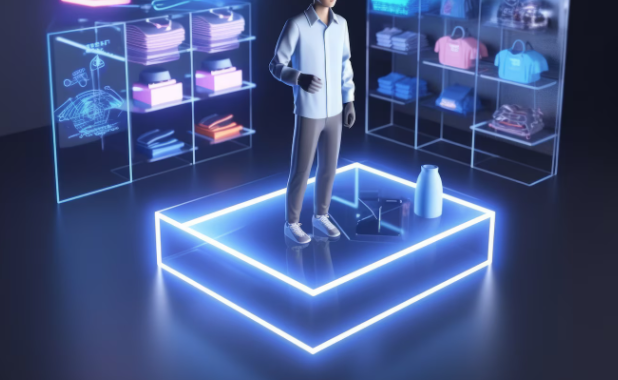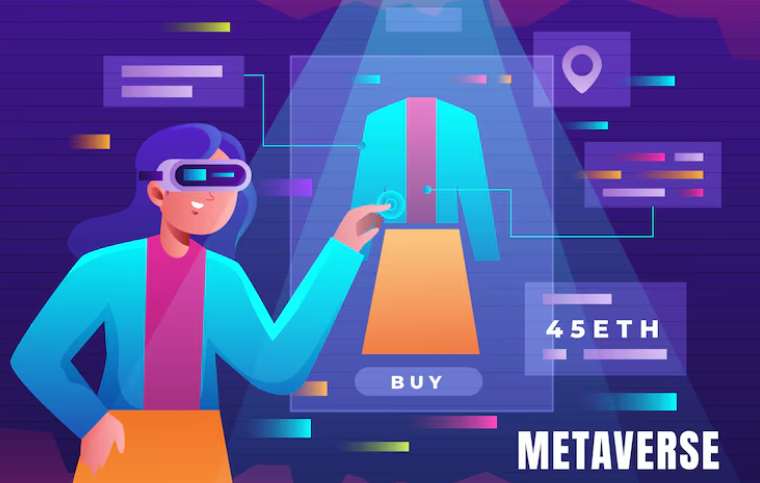The eCommerce landscape is undergoing a massive transformation. As we enter 2025, one of the most disruptive forces shaping the industry is AI-driven personalization. Consumers no longer want generic shopping experiences—they expect brands to anticipate their needs, offer tailored recommendations, and create seamless interactions across every touchpoint.
With artificial intelligence (AI) advancing rapidly, personalization in eCommerce has gone beyond simple “customers who bought this also bought that” suggestions. It’s now about delivering hyper-personalized experiences powered by data, machine learning, and predictive analytics. In this article, we’ll explore how AI-driven personalization is redefining eCommerce in 2025, the key trends driving its growth, and what businesses must do to stay ahead.
Why AI-Driven Personalization Matters More Than Ever
In the age of digital-first shopping, personalization is no longer a luxury—it’s a necessity. Customers have countless options at their fingertips, and brands that fail to deliver tailored experiences risk being left behind. According to recent studies:
- 80% of consumers are more likely to purchase from brands that provide personalized experiences.
- 71% of shoppers express frustration when their online experience is impersonal.
- Businesses that leverage AI personalization see up to a 20% increase in sales conversion rates.
In 2025, AI takes personalization to the next level by combining data insights, natural language processing (NLP), and real-time behavioral tracking. This enables brands to deliver unique shopping journeys for every individual.
Key Drivers of AI-Driven Personalization in 2025

1. Advanced Predictive Analytics
AI uses past purchase history, browsing patterns, and even external data (like social media behavior) to predict what a customer is likely to buy next. In 2025, predictive analytics is becoming more accurate than ever, helping businesses reduce cart abandonment and improve upselling opportunities.
For example, an AI system might recommend a fitness tracker to a user browsing workout shoes, anticipating their lifestyle needs.
2. Hyper-Personalized Product Recommendations
Generic “related items” are outdated. Instead, AI now curates product recommendations unique to each shopper, factoring in style preferences, budget, location, and even real-time contextual data (such as weather or holidays).
Imagine an eCommerce app suggesting cozy jackets to a user in New York during a snowstorm, while recommending beachwear to a customer in Miami—all in real time.
3. Conversational AI & Personalized Chatbots
In 2025, chatbots are no longer robotic or scripted. Powered by conversational AI and NLP, they act as personal shopping assistants, capable of remembering past interactions and preferences.
Instead of just answering queries, these bots can proactively suggest products, remind users of abandoned carts, or even provide fashion styling advice.
4. AI-Enhanced Visual Search
Visual search is becoming a core feature of eCommerce platforms. Customers can now upload a photo or screenshot, and AI will instantly find similar or identical products in the store. This trend makes online shopping more personal, intuitive, and efficient.
For instance, if a customer sees a celebrity wearing a specific jacket, they can upload the photo and instantly get tailored product matches.
5. Dynamic Pricing & Offers
AI-driven personalization goes beyond product suggestions. In 2025, businesses are leveraging AI for dynamic pricing models, tailoring discounts and promotions to individual customers.
For example:
- A loyal customer might get an exclusive 10% discount on their favorite brand.
- A new customer browsing high-end electronics may be offered free shipping to encourage a first purchase.
This ensures each shopper feels valued and catered to.
6. Personalized Content & Storytelling
AI doesn’t just personalize products—it personalizes content experiences too. Websites and apps in 2025 dynamically adapt homepages, blogs, and product descriptions to match individual interests.
For example, a beauty brand’s site may highlight skincare content for one user and makeup tutorials for another, based on browsing history.
Benefits of AI-Driven Personalization for eCommerce Businesses
- Increased Conversions – Personalized experiences lead to higher engagement and more completed purchases.
- Improved Customer Loyalty – Shoppers are more likely to return to brands that understand them.
- Reduced Cart Abandonment – Timely recommendations and personalized incentives help customers finalize purchases.
- Higher Average Order Value (AOV) – AI-powered upselling and cross-selling encourage customers to buy more.
- Enhanced Brand Differentiation – In a competitive market, personalization sets your business apart.
Challenges of AI-Driven Personalization in 2025
While AI personalization is a game-changer, businesses face challenges in adopting it effectively:
- Data Privacy Concerns – Customers are more aware of how their data is used. Brands must prioritize transparency and compliance with global data regulations (like GDPR and CCPA).
- Integration Complexity – Implementing AI systems requires advanced infrastructure and skilled talent.
- Avoiding Over-Personalization – Too much personalization can feel invasive. Striking the right balance is crucial.
- Bias in AI Algorithms – If AI is trained on biased data, recommendations may become inaccurate or discriminatory.
How Businesses Can Prepare for AI-Driven Personalization
- Invest in AI-Powered Platforms
Adopt tools and platforms that offer built-in personalization features, such as Shopify Plus AI integrations, Salesforce Commerce Cloud, or custom AI solutions. - Leverage First-Party Data
With third-party cookies disappearing, collecting and utilizing first-party data from direct customer interactions will be key. - Focus on Omnichannel Personalization
Ensure AI-driven personalization is consistent across websites, apps, social media, and even in-store experiences. - Prioritize Ethical AI Use
Be transparent about data usage and provide users with control over personalization preferences. - Continuously Test & Optimize
AI evolves quickly—businesses must constantly monitor results, fine-tune algorithms, and adapt strategies.
The Future of AI-Driven in eCommerce Beyond 2025
Looking ahead, AI will continue to push personalization into new dimensions:
- Emotion Recognition – AI-Driven could analyze customer moods via voice or facial recognition to tailor shopping experiences.
- Metaverse Shopping Experiences – Personalized virtual stores in the metaverse where every product and design adapts to user tastes.
- Voice Commerce – Personalized shopping via smart assistants like Alexa and Google Assistant.
The ultimate goal is to create shopping journeys so seamless and intuitive that customers feel every brand interaction was designed exclusively for them.
Final Thoughts
As we move into 2025, AI-driven personalization is no longer optional—it’s the foundation of eCommerce success. Businesses that embrace it will deliver richer, smarter, and more engaging customer experiences. Those that resist will struggle to keep up in an era where personalization is not just appreciated but expected.
By leveraging AI-Driven technologies responsibly and strategically, eCommerce brands can build stronger connections, boost loyalty, and unlock unprecedented growth in the digital marketplace.

